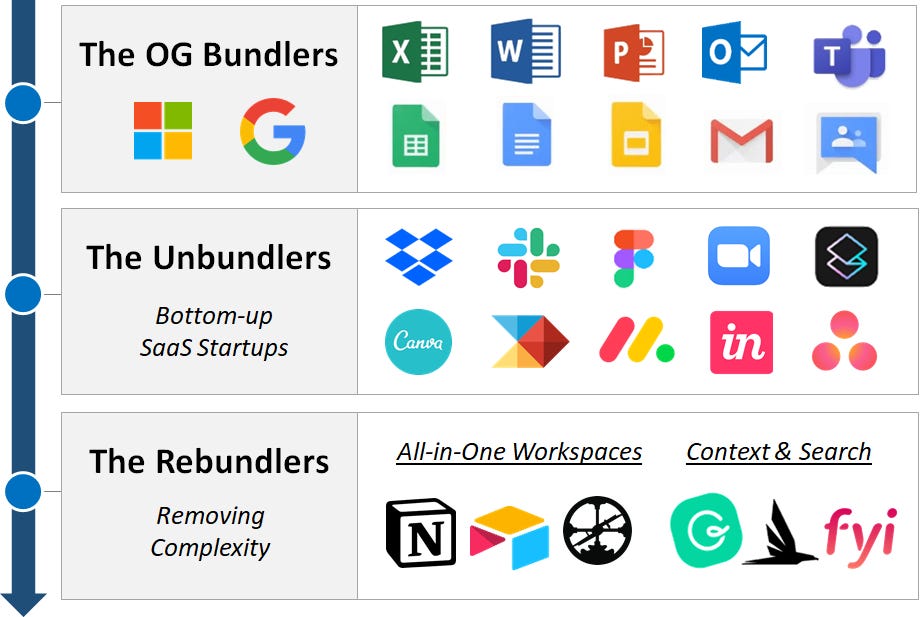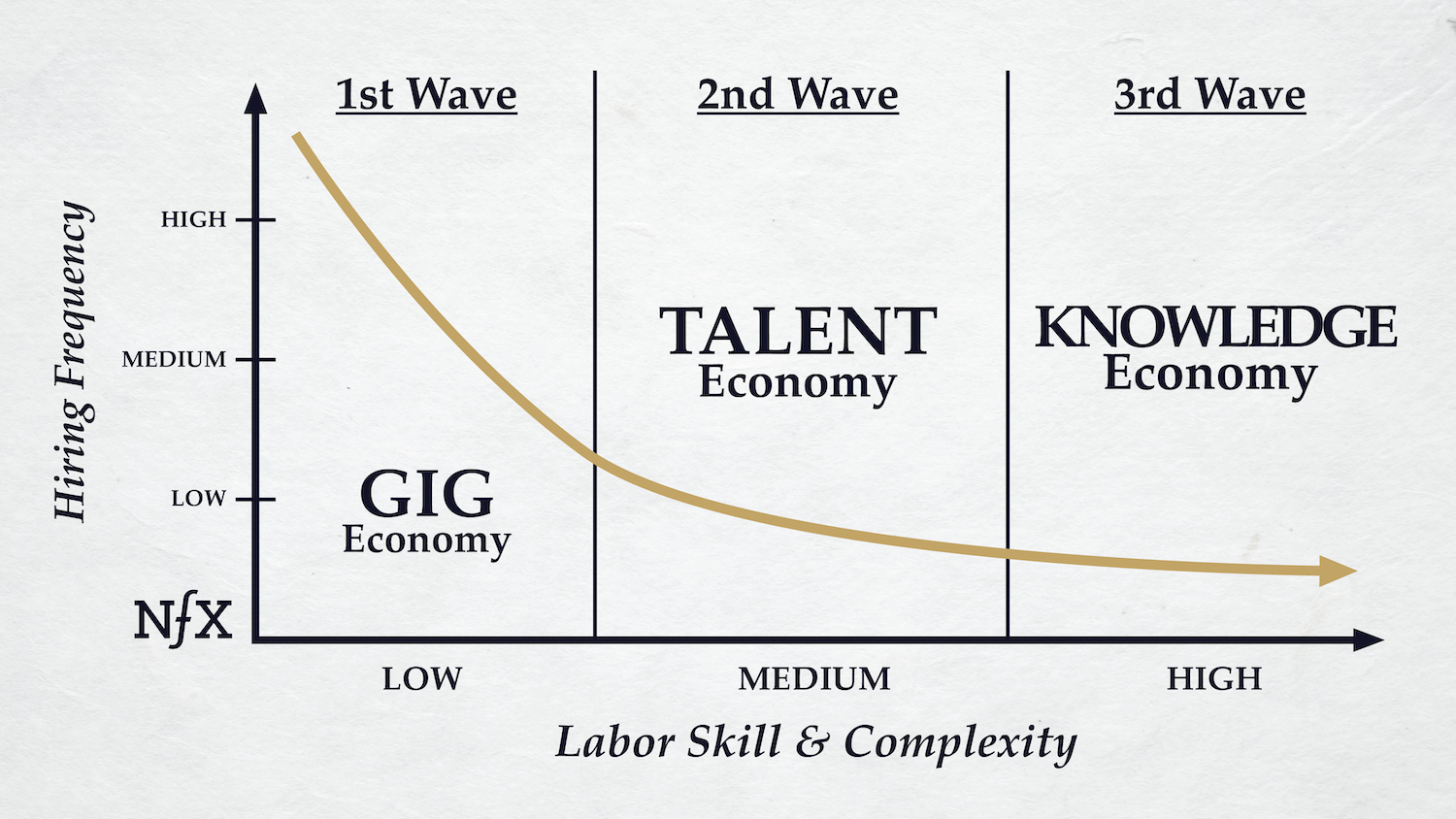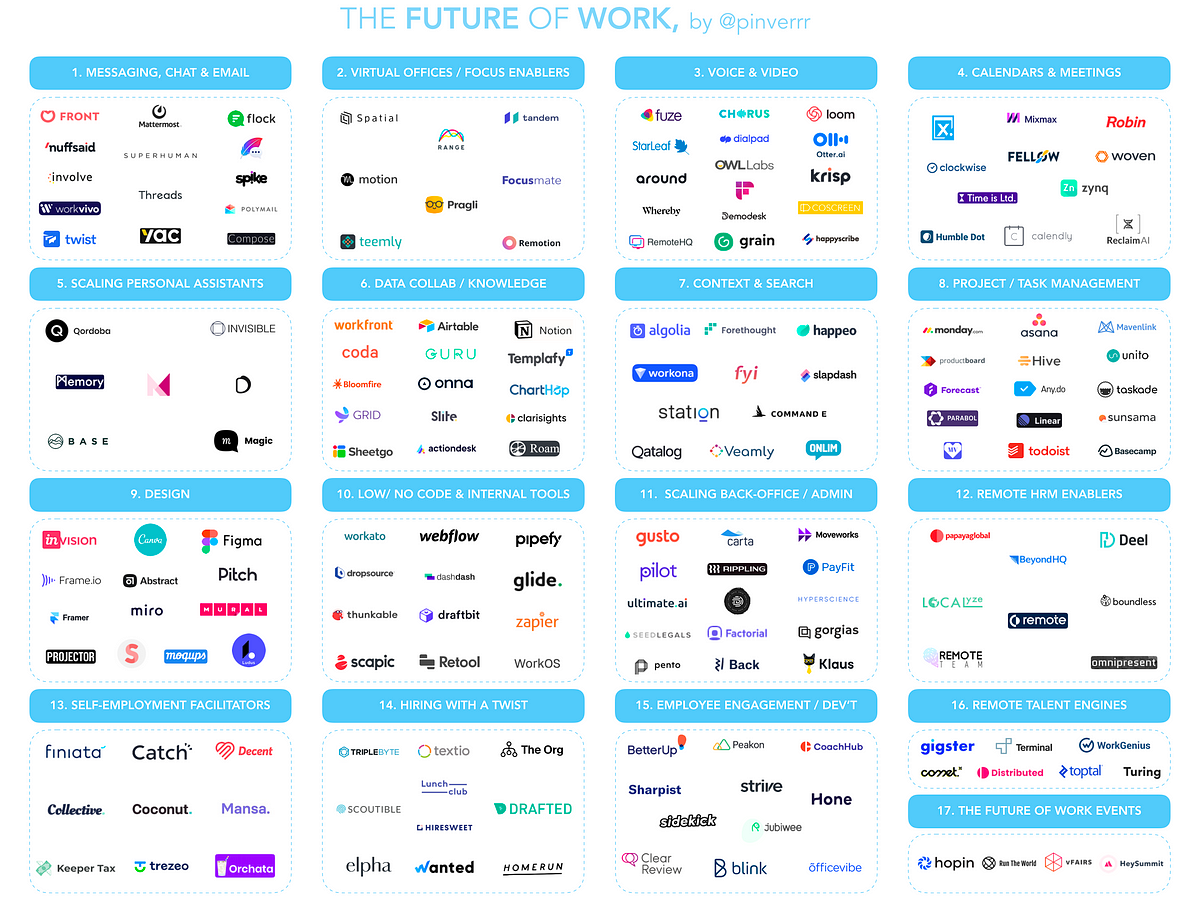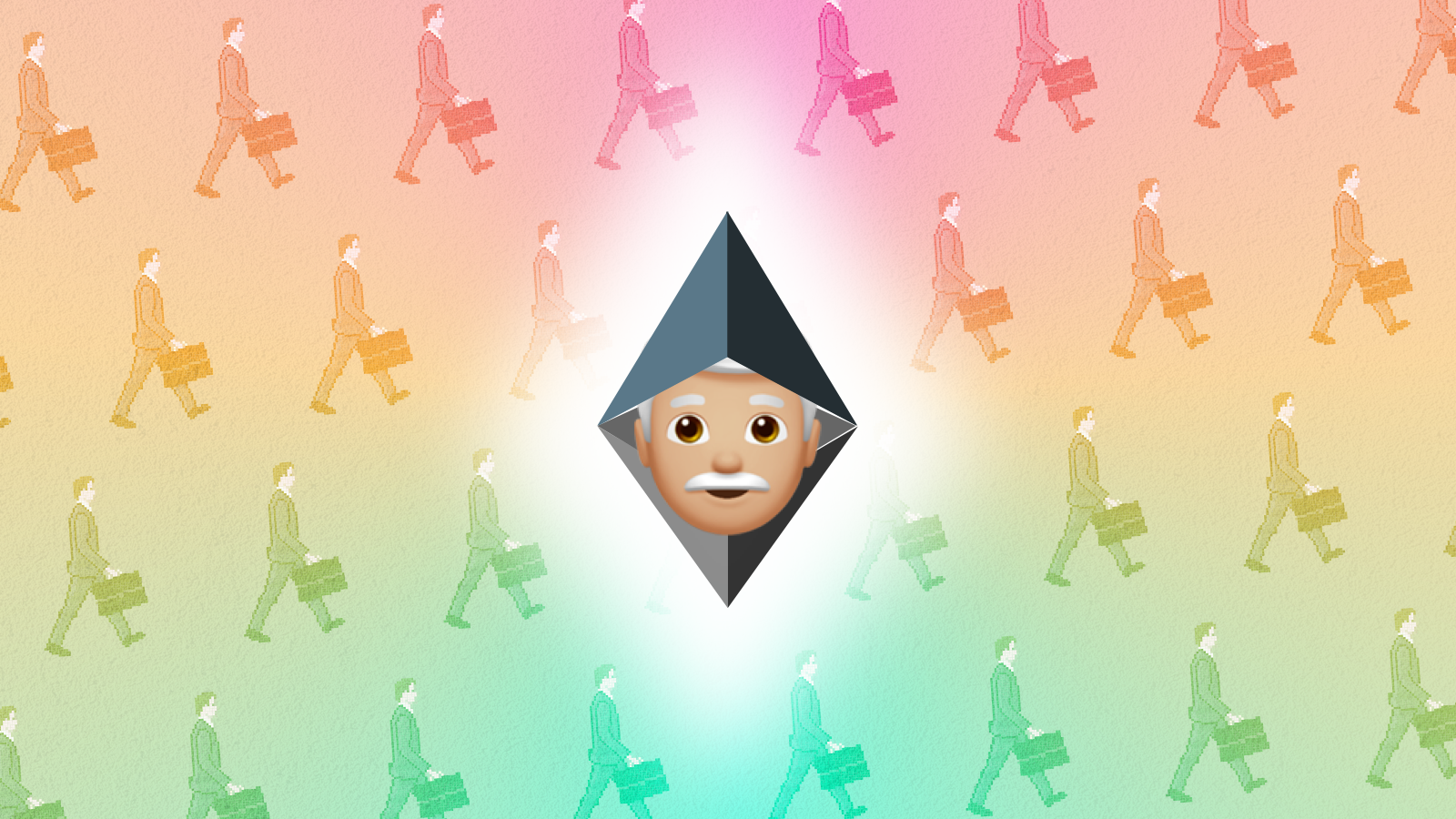Talent Liquidity Pools
In the internet economy, though, the atomic unit is the person, and work is becoming more liquid as people realize that they’re able to flow more freely. (https://www.notboring.co/p/the-cooperation-economy-)
Investors would never choose to invest in just one company; the risk is too concentrated. Instead, they build portfolios. Over time, workers will invest their time in a similar way.

With increased specialization of labor comes the increased relevance of automation.
It’s therefore a responsibility as well as a good strategy for labor marketplaces to anticipate supply-side disruptions and retool their users for the changing demands in the labor market. Otherwise, all the defensibility you build by aggregating a pool of labor will evaporate with the inexorable forward march of automation.
⇒ what tech trends around work are inevitable in the future?
What divides the successes from the failures fundamentally comes down to two things:
- Driving liquidity in the marketplace.
- Reducing disintermediation.
Disintermediation, on the other hand, is the bane of marketplaces. This is where the supply or demand side circumvents the marketplace, typically as a result of failure to provide sufficient value for fees, or because there is greater convenience and confidence for participants to interact directly. Again, verticalization and using technology to build in capabilities where users on both sides derive value from maintaining participation on the platform is critical to addressing the problem.

A lot of people previously employed by a traditional media company or dependent on traditional distribution channels adopted online video platforms like TikTok and YouTube, or newsletter platforms like Substack, and built a social graph and a direct line to their fan base. They won’t give up that direct line and the ways in which they now control distribution and pricing after this pandemic subsides.
Representation across platforms has become more critical than ever.
What key problems remain to be solved for creator economies to truly succeed?
Monetization, payments, education — not just in North America but in regions like Asia Pacific, Latin America, Africa, Middle East.
Li
I’m excited about products that enable and make accessible new forms of creativity that may not even exist today. What are future forms of creativity that many more people can participate in?
COVID accelerated a shift that was already occurring, transforming our relationship with traditional employment and catalyzing solopreneurship and creative work.
The specific factors that led to this are a combination of: People experimenting with creative hobbies and passions; an erosion of trust in institutions and a consequent push toward individualism; the normalization of virtual relationships and communities; and a need, among many, to generate income virtually.
Overall, I think it’s still a very nascent time in the creator space, but some opportunity areas have become a lot more crowded with a large number of companies (e.g., virtual events, virtual class platforms, etc).
What key problems remain to be solved for creator economies to truly succeed?
Building the middle class of creators: Last December, I wrote about the need for a middle class of creators. Platforms win when a large base of creators believe they can grow and succeed. Solutions include giving emerging creators opportunities for exposure and investment in creator education and wellness.
What key problems remain to be solved for creator economies to truly succeed?
Discovery continues to be a real challenge for creators. The best content doesn’t always rise to the top. The incentives remain to create content that will be viral and get eyeballs. It is easier to steal someone else’s joke than to come up with your own. Creators need to be experts at both creation and distribution. There exists an opportunity to bring content together and bundle it in rational ways that make users think less, while also enabling the best material to find an audience. Some people can be focused more on distribution while others are more focused on creation.
Tech startups can play a big role by creating tools and platforms to facilitate the various parts of the creator economy value chain: From content creation, distribution and monetization tools to ad hoc marketplaces for niche audiences. This is one of our areas of interest at Remagine Ventures.
In general, the tools that get adopted are those that remove friction in creating, building an audience and helping the creator monetize. Low-code/no-code startups (like Webflow or Voiceflow) have an advantage if they’re intuitive to use. It’s a fragmented market with a lot of new tools being launched, but there’s still a huge opportunity in this space.
What areas have matured and are less interesting to you today versus a year ago?
As a consumer, I am in awe of the creativity and talent of emerging creators. While social shopping seems to be a strong trend in 2021, I’m less interested in influencer platforms. I love podcasting as a user, but Clubhouse has almost replaced podcasts for me, at least temporarily.
What key problems remain to be solved for creator economies to truly succeed?
The key problems that remain to be solved:
Content discovery for the creation economy is still poor: Word-of-mouth remains the best discovery source, which is why you see a lot of people on social media asking for recommendations on podcasts or newsletters.
Copyright, or the lack thereof: It’s hard for creators to prevent illegal distribution of their IP. Anyone can download a TikTok video or copy it, forward a newsletter or share “exclusive” images with friends on WhatsApp.
Attention spans are getting shorter: Not every person that starts a newsletter is Ben Thompson, and not every Twitch streamer is Ninja. Few people have been able to build full “hustle economy” careers. The quality bar to cut through the noise is constantly rising.
Subscription fatigue and bundling wars: Creators, especially those in the “media” space, are competing on the consumer dollars with aggregators (like Spotify or Apple). For example, Apple fit adds new content every week and is bundling their subscription with music and storage for a low monthly fee. [This likely hurts] the individual trainer trying to go direct to the consumer.
Content moderation: Remains a challenge on open platforms like Clubhouse or Twitch. Female streamers often complain about having to deal with trolls and lack of moderation. An automated tool to help platforms clean up their content and remove abusive users could be a great help.
What are the new opportunities for creators and startups who are serving creators, within the larger landscape of the big freelance platforms today?
The big opportunity for creators and the startups that serve them is in moving fan bases off of mainstream social media platforms and onto monetization-focused properties. As we detailed in SignalFire’s Creator Economy Market Map, phase 1 was about building fan bases on major platforms like YouTube and Instagram, and phase 2 was about monetizing generic, brand-safe content through ad revenue shares and influencer marketing on those big platforms. Now phase 3 of the creator economy is about stars moving their biggest fans to subscription patronage, content sales, merchandise, meet-and-greet, and educational course platforms where they can entertain them with more niche or personalized content that earns them dollars per user rather than fractions of a cent.
In our age of remote work, it’s harder for knowledge workers to learn from one another. Whereas once it was easy to observe co-workers navigate problems by peering over their shoulders or jamming on a whiteboard, now their work has been rendered invisible.
This diminishing ability to witness work impacts junior workers the most. As they get less exposure to functional experts, they lose out on learning and networking opportunities.
What will emerge to fill this gap? One answer is Twitch. Ben Pieratt, a brand designer, launched Pre-Brand, a rapid branding service that mostly happens in Figma, live-streamed over Twitch. Increasingly these kinds of “working in public” experiences will create better visibility of knowledge work.
Next year, I hope to see more managers live-streaming themselves triaging email or building decks. If this becomes standard practice, it will offer much-needed learning opportunities for the next generation of knowledge workers.







